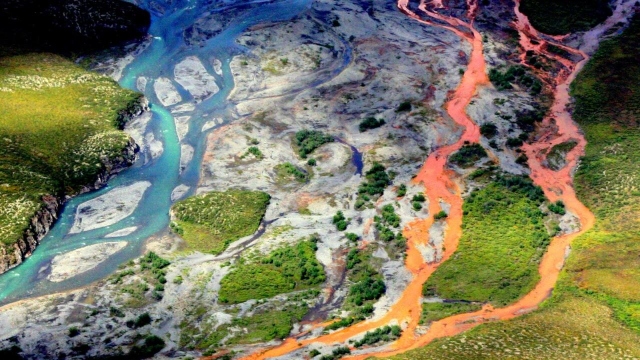[imagesource:phys.org]
Dozens of Alaska’s most remote streams and rivers, normally crystal clear blue, are turning a cloudy orange, and researchers believe the staining could be the result of minerals exposed by thawing permafrost.
Researchers from the National Park Service, the US Geological Survey, the University of California, and other institutions have documented and sampled some of the waters, pinpointing 75 locations across a Texas-sized area of northern Alaska’s Brooks Range.
These degraded rivers and streams could have significant implications for drinking water and fisheries in Arctic watersheds as the climate changes, the researchers said.
“The more we flew around, we started noticing more and more orange rivers and streams,” said lead author Jon O’Donnell, an ecologist for the NPS’ Arctic Inventory and Monitoring Network.
“There are certain sites that look almost like a milky orange juice. Those orange streams can be problematic both in terms of being toxic but might also prevent migration of fish to spawning areas.”

“The stained rivers are so big we can see them from space.”
Brett Poulin, an assistant professor of environmental toxicology at UC Davis who was a principal investigator in the research, says the staining looks similar to what happens with acid mine drainage, except no mines are near any of the impaired rivers, including along the famed Salmon River and other federally protected waters.
One hypothesis is that the permafrost, which is essentially frozen ground, stores minerals and as the climate warmed, the metal ores that were once locked up were exposed to water and oxygen, resulting in the release of acid and metals.
“Chemistry tells us minerals are weathering,” Poulin said. “Understanding what’s in the water is a fingerprint as to what occurred.”
The impacted rivers are on federal lands managed by the Bureau of Land Management, Fish and Wildlife Service and NPS, including Gates of the Arctic and Kobuk Valley National Parks.
Poulin and PhD candidate Taylor Evinger analysed initial samples, then collected their own on a trip last August, while others took samples in June and July. This year, they will take three trips during the summer to collect additional samples.
Elevated or high levels of iron, zinc, nickel, copper and cadmium have been measured. The problem is growing and affecting habitat, water quality and other ecological systems, turning healthy areas into degraded habitats with fewer fish and invertebrates. If rural communities rely on these rivers for drinking water, they could require treatment eventually, and the fishing stocks that feed local residents could be affected.
“As the climate continues to warm, we would expect permafrost to continue to thaw and so wherever there are these types of minerals, there’s potential for streams to be turning orange and becoming degraded in terms of water quality.”
More work is needed to better understand the problem and whether rivers and streams can rebound, perhaps after cold weather promotes permafrost recovery.
[source:phys.org]





